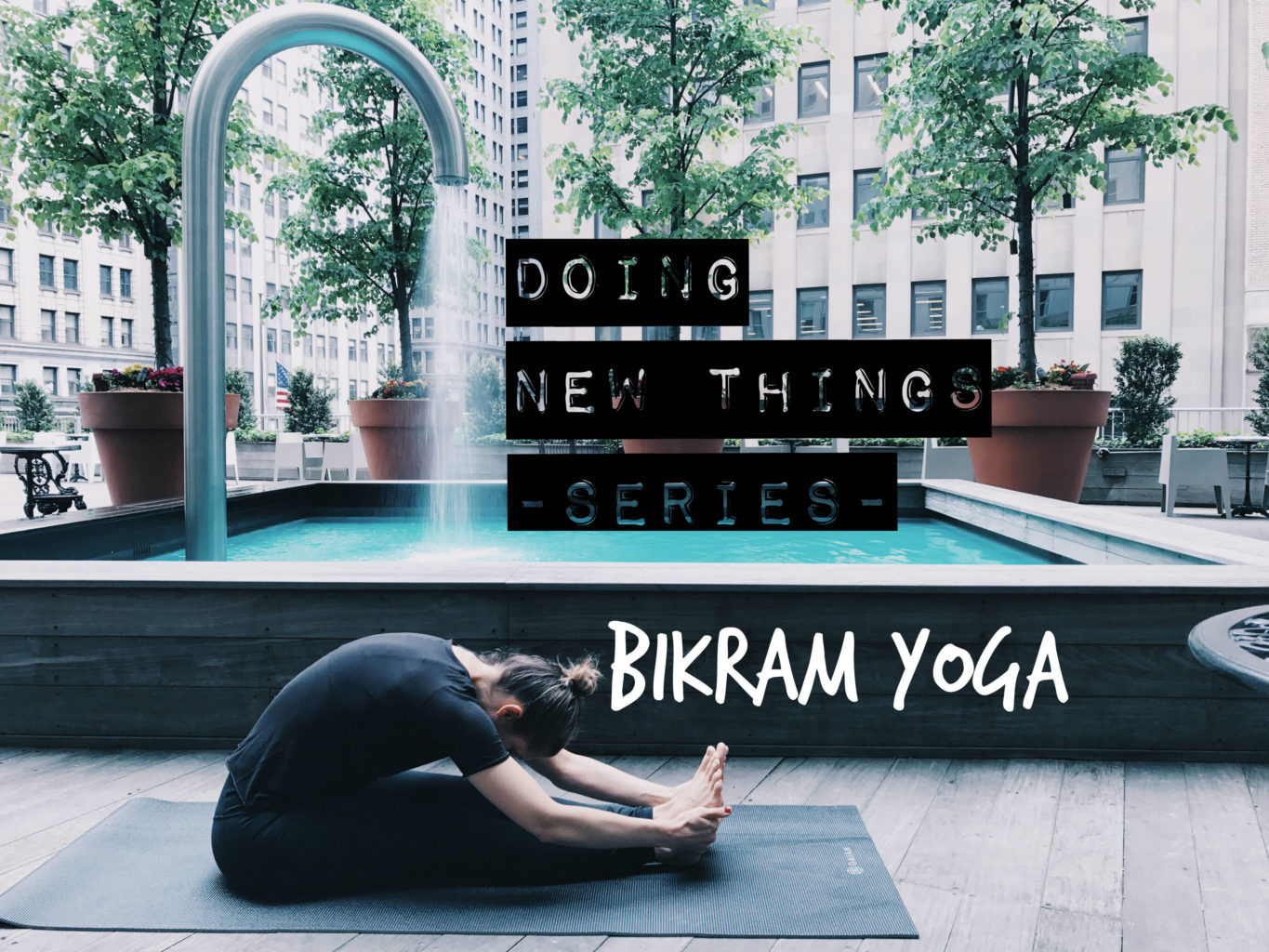This is part of the “Doing New Things” series where I’m trying to get out of my daily routine and explore newness by – you guessed it – doing new things. 52 new things in one year to be exact. Read more about my intention behind it here and view the complete list of things here. Today I’m writing about my experience attending a Bikram Yoga class (#14 on my list).
My Experience With Yoga
While I’m certainly not an experienced yogi, I have some experience with yoga and have tried a few different types. I’ve done pure, strenuous Ashtanga, calm Yin Yoga, Hot Yoga, demanding Rocket Yoga, meditative Kundalini Yoga and the more flowy Vinyasa Yoga, the latter of which I usually practice when I do yoga nowadays.
What Is Bikram Yoga?
The only thing I knew about Bikram Yoga was that it was performed in a heated room and thought it would just be another form of Hot Yoga. However, I learned that it’s a much more regimented type of yoga, much like Ashtanga. Let’s break it down:
- The room is heated to 105ºF degrees with about 40% humidity.
- Students follow the same 26 poses (devised by Bikram Choudhury in India several decades ago).
- Poses are more static and less fluid than in a Vinyasa type class.
- Two styles of breathing are frequently performed throughout class: 80-20 breathing and exhalation breathing (learn more here).
- A class typically takes 90 minutes (although you can find shorter ones too).
Benefits Of Bikram Yoga
This type of yoga claims to have several benefits. Some of them are the following:
- Enhanced blood supply to arteries and veins
- Blood thinning
- Detoxification
- Improved strength
- Greater cardiovascular capacity (through increased heart rate during practice)
- Reorganization of lipids (fat) in muscular structure
Not Allowed To Leave The Room?
A few months ago, a friend of mine told me about her experience. She actually had not the best experience. She told me that she felt dizzy during class and wanted to leave the room but was not allowed to. I think they actually locked the door so she really couldn’t leave and had to lie on her mat waiting until the class was over.
That’s pretty intense and I wonder what the instructor would have done, had she actually passed out. My friend also said that it might have only been the particular studio she went to. I did more research into that and it seems like most studios encourage students to stay in the class for the entire lenght of the class. This has two reasons. One, they don’t want the students to disrupt their own practice and finish the whole sequence of poses in order for them to be able to achieve the greatest benefits. Second, they don’t want that the other students get disrupted. This all makes a lot of sense. However, I couldn’t find anything where it says it’s not allowed to leave at all.
Bikram Yoga has some sort of cult-ish feel to some. I believe that my friend attributed her not given permission to leave the room to that. Maybe it was a mis-understanding and the teacher didn’t understand that she was not feeling all too well or wanted her to push through. All in all, it just made me curious and I wanted to experience for myself if I could do it.
My Experience Attending A Bikram Yoga Class
I went to the Bikram Yoga NYC studio in Flatiron District to attend a 75-minute class. For a 12:30-class in the middle of the week, the room was packed with people and I barely found an empty spot on the floor. I had brought all of the things I needed in order to avoid having to rent a mat and towels which can add up quickly. The room was pretty hot already and most female students wore very light clothing (sports/bikini bra and short pants). There was also a number of guys only wearing shorts.
The teacher introduced herself at the beginning of class and asked about newbies and injuries. I think I was the only person in the room who had never attended a Bikram Yoga class before although there were a couple of people who were new to this particular studio. She took the time to explain what it was about and that she would talk through the whole class and lead us in and out of the different poses.
Throughout the class, the instructor went through the room and talked but I think she never adjusted people physically but rather through talking. She also encouraged us to take a break by sitting or lying down on the mat whenever needed. Also, drinking is discouraged during poses but the instructor let us know when we could have a sip.
As the class progressed, I found it more and more difficult to do the poses in the humid heat. I was lucky though that I had my mat right next to the window front. The instructor opened some of the windows occasionally just a little to let in a fresh air when it was getting all too hot and sticky. So that was a god’s end. Nevertheless, I tried to push through but found myself wishing the class was over as we were nearing the end.
Some of the students took multiple breaks. One or two also left the studio in the middle of the class to get some water or fresh air. So yes, I could have left and wasn’t trapped in there. It was visible in everyone’s eyes that it demanded much of us. Most of the poses are not extremely difficult. However, the poses combined with the heat and the breathing exercises makes it tough.
After the class ended, most students rushed out without lying still for a few minutes in Shavasana pose. This might have had to do with that the class didn’t end on time. So I waded through puddles of sweat (literally), changed in the locker room and left to get some much needed fresh air.
Conclusion
I have the same problem with Bikram Yoga as I have with Hot Yoga. I’d rather get my sweat on by the physical activity I’m doing rather than the heat. The profuse sweating makes me think I’m working harder than I actually do. I understand that the heat is supposed to add benefits like making you more flexible and fluid with your poses. However, I much rather prefer to create the heat myself.
What is your preferred type of yoga? Have you ever tried a Bikram Yoga class?

